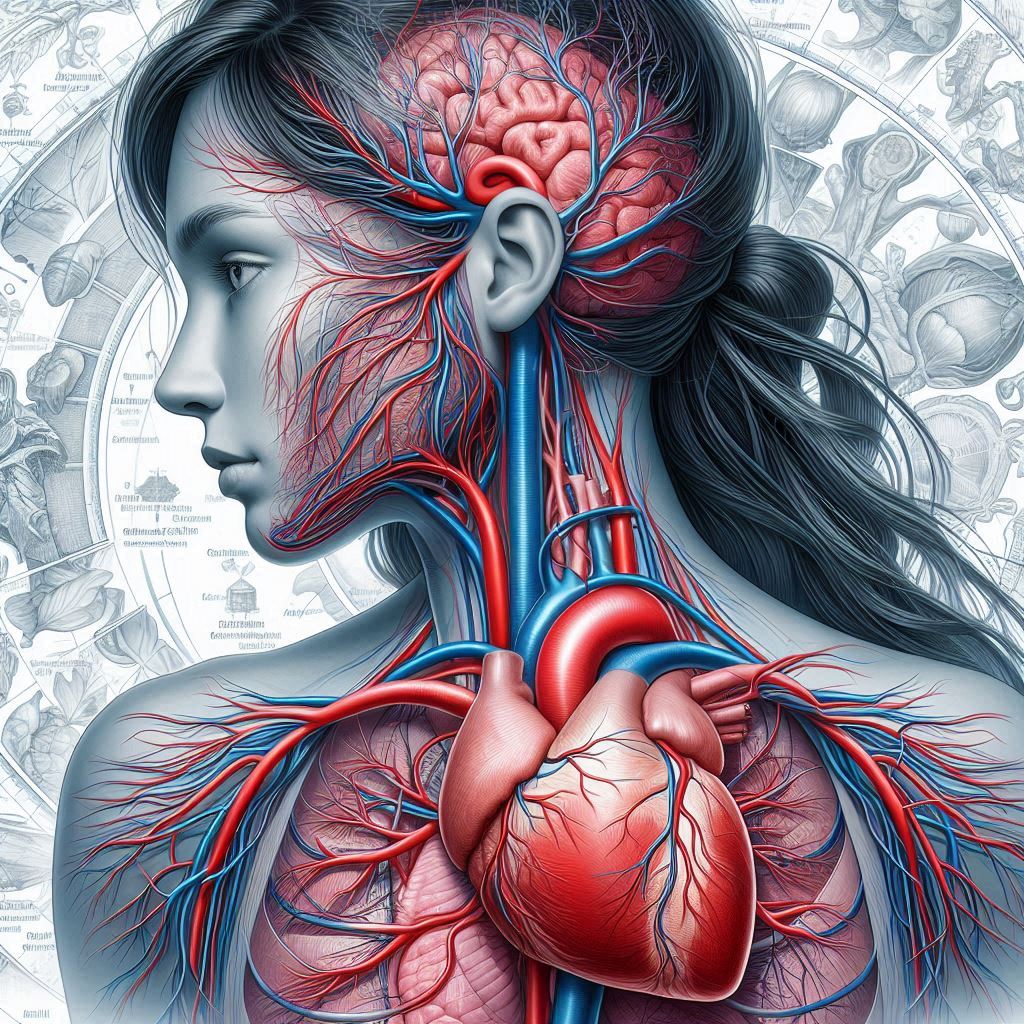Introduction to the Circulatory System
The circulatory system, also known as the cardiovascular system, is an essential body system responsible for transporting nutrients, oxygen, and hormones to cells throughout the body and removing metabolic wastes such as carbon dioxide and nitrogenous wastes. It consists of the heart, blood vessels, and blood. This lesson will cover the components, functions, and processes of the circulatory system, fitting for Grade 11 students.
Objectives
By the end of this lesson, students should be able to:
- Describe the components of the circulatory system.
- Explain the function of the heart and the flow of blood through the heart.
- Differentiate between arteries, veins, and capillaries.
- Understand the composition and functions of blood.
- Explain the process of systemic and pulmonary circulation.
Components of the Circulatory System
The major components of the heart consists of the – – Heart, Blood and Blood Vessels.
They are discussed below.
- HEART
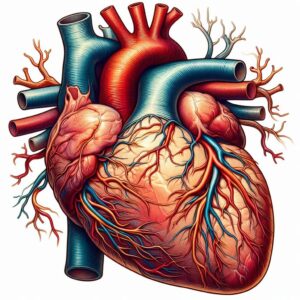
In biology, the heart is a muscular organ found in most animals that pumps blood through the blood vessels of the circulatory system. The heart is a central component of the circulatory system, responsible for maintaining the flow of blood throughout the body to supply tissues with oxygen and nutrients while removing carbon dioxide and other waste products.
Key Characteristics of the Heart
- Muscular Structure:
- The heart is primarily composed of cardiac muscle, a specialized type of muscle tissue that can contract rhythmically and continuously without fatigue.
- Chambers:
- The heart has four chambers: two atria (upper chambers) and two ventricles (lower chambers).
- The right atrium receives deoxygenated blood from the body and pumps it into the right ventricle, which then sends it to the lungs for oxygenation.
- The left atrium receives oxygenated blood from the lungs and pumps it into the left ventricle, which then distributes it throughout the body.
- Valves:
- The heart contains valves (tricuspid, pulmonary, mitral, and aortic) that ensure the unidirectional flow of blood and prevent backflow.
- Electrical System:
- The heart has an intrinsic electrical system that generates and conducts electrical impulses, initiating and regulating heartbeats.
- The sinoatrial (SA) node, often called the natural pacemaker, generates electrical impulses that travel through the heart muscle, prompting it to contract.
- Blood Supply:
- The heart has its own blood supply through the coronary arteries, which provide oxygen and nutrients to the cardiac muscle.
- BLOOD VESSELS
Types of Blood Vessels
Arteries: Carry oxygen-rich blood away from the heart.
Structure of Arteries
* Thick-walled and elastic.
* Carry blood away from the heart.
Main artery: Aorta.
Veins: Carry oxygen-poor blood back to the heart.
Structure of Veins
* Thinner walls than arteries.
* Have valves to prevent backflow.
* Carry blood toward the heart.
Main veins: Superior and Inferior vena cava.
Capillaries: Tiny blood vessels where exchange of substances occurs between blood and tissues.
Structure of Capillaries
* Microscopic vessels connecting arterioles and venules.
* Walls are one cell thick, allowing exchange of gases, nutrients, and wastes.
below is an image of arteries, veins and capillaries in a human body.
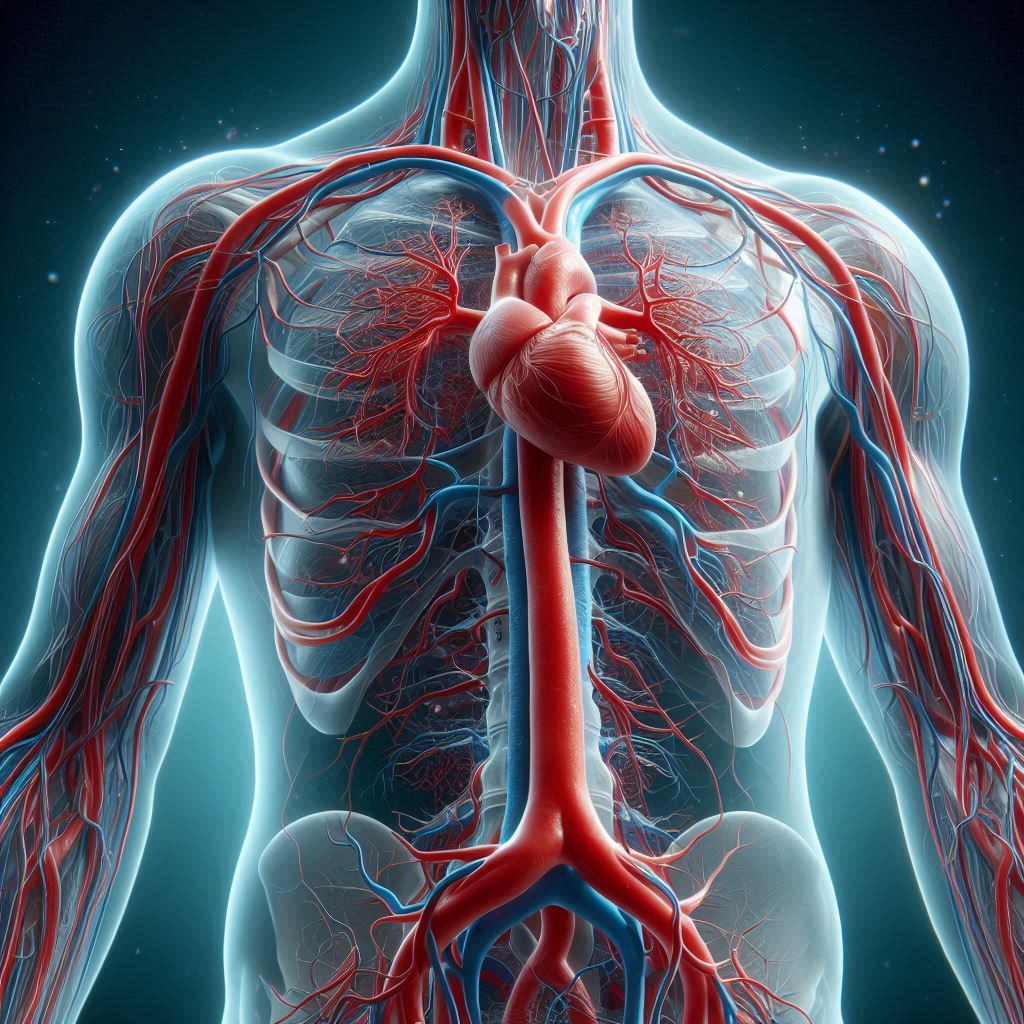
image of arteries, veins and capillaries connected to the human heart
- BLOOD
Blood is a specialized bodily fluid that performs critical functions essential for maintaining homeostasis, supporting the immune system, and facilitating the transport of nutrients, gases, and wastes throughout the body. It is a connective tissue composed of various cells suspended in a liquid matrix called plasma.

flow of blood through arteries.
Functions of Blood
Transport:
Oxygen and Carbon Dioxide: Blood transports oxygen from the lungs to the body’s cells and carries carbon dioxide from the cells back to the lungs.
Nutrients: Blood carries nutrients from the digestive tract to the cells throughout the body.
Waste Products: Blood transports metabolic wastes to the kidneys, liver, and lungs for excretion.
Hormones: Blood carries hormones from endocrine glands to target organs and tissues.
Regulation:
Temperature: Blood helps regulate body temperature by distributing heat throughout the body and absorbing or releasing heat as needed.
pH Balance: Blood maintains acid-base balance (pH) through buffer systems.
Fluid Balance: Blood regulates the fluid balance of body tissues.
Protection:
Clotting: Platelets and plasma proteins work together to prevent blood loss by forming clots.
Immune Defense: White blood cells and antibodies in blood defend against pathogens and foreign substances.
Structure and Function of the Heart
The heart is divided into four chambers:
- Right Atrium: Receives deoxygenated blood from the body via the superior and inferior vena cava.
- Right Ventricle: Pumps deoxygenated blood to the lungs via the pulmonary artery.
- Left Atrium: Receives oxygenated blood from the lungs via the pulmonary veins.
- Left Ventricle: Pumps oxygenated blood to the rest of the body via the aorta.
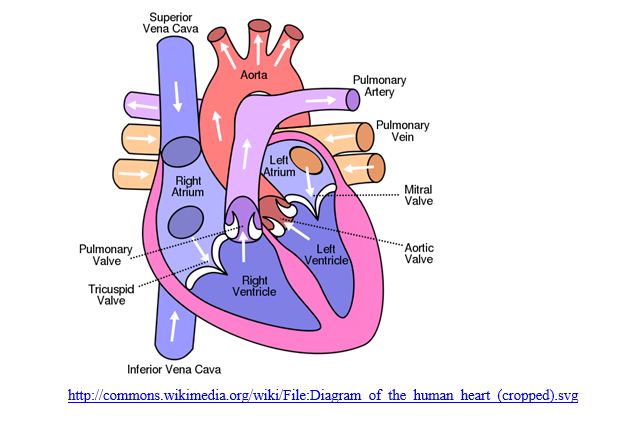
Functions of the Heart
The heart facilitates the removal of metabolic waste products, such as carbon dioxide, by circulating blood to the lungs and other excretory organs.
Pumping Blood:
The primary function of the heart is to pump blood throughout the body. The right side of the heart pumps deoxygenated blood to the lungs for oxygenation, while the left side pumps oxygenated blood to the rest of the body.
Maintaining Blood Pressure:
The heart helps maintain adequate blood pressure to ensure that blood reaches all parts of the body.
Supporting Metabolic Needs:
By delivering oxygen and nutrients to tissues and organs, the heart supports cellular metabolism and overall body function.
Removing Waste Products:
The heart facilitates the removal of metabolic waste products, such as carbon dioxide, by circulating blood to the lungs and other excretory organs.
Blood Flow Through the Heart
Deoxygenated Blood Flow:
Blood enters the right atrium from the superior and inferior vena cava.
Blood moves from the right atrium to the right ventricle through the tricuspid valve.
The right ventricle pumps blood to the lungs via the pulmonary artery.
Oxygenated Blood Flow
Blood returns to the left atrium from the lungs via the pulmonary veins.
Blood moves from the left atrium to the left ventricle through the bicuspid (mitral) valve.
The left ventricle pumps blood to the body via the aorta.
Types of Blood Vessels
- Arteries:
- Thick-walled and elastic.
- Carry blood away from the heart.
- Main artery: Aorta.
- Veins:
- Thinner walls than arteries.
- Have valves to prevent backflow.
- Carry blood toward the heart.
- Main veins: Superior and Inferior vena cava.
- Capillaries:
- Microscopic vessels connecting arterioles and venules.
- Walls are one cell thick, allowing exchange of gases, nutrients, and wastes.
Composition and Functions of Blood
Red Blood Cells (Erythrocytes):
- Description: Red blood cells are biconcave, disc-shaped cells that lack a nucleus and contain the protein hemoglobin.
- Functions: The primary function of red blood cells is to transport oxygen from the lungs to the tissues and organs of the body and to carry carbon dioxide back to the lungs for exhalation. Hemoglobin binds to oxygen and facilitates its transport.
below is an image of red blood cells passing through an artery.
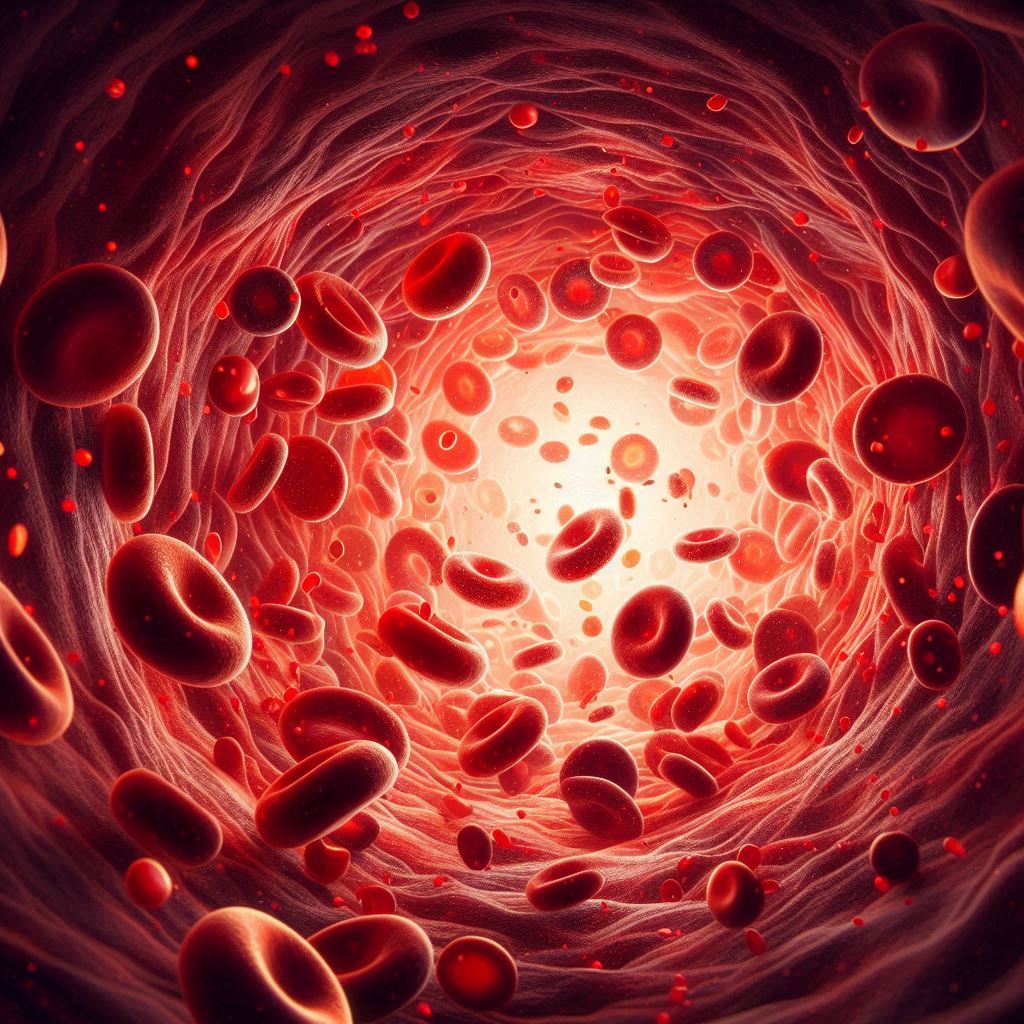
Image of red blood cells
White Blood Cells (Leukocytes):
- Description: White blood cells are larger than red blood cells and have nuclei. They are less numerous but play a crucial role in the immune response.
- Types and Functions: There are several types of white blood cells, each with specific functions:
- Neutrophils: Engulf and destroy bacteria and fungi.
- Lymphocytes: Include B-cells (produce antibodies) and T-cells (attack infected cells).
- Monocytes: Develop into macrophages that engulf pathogens and dead cells.
- Eosinophils: Combat parasitic infections and participate in allergic reactions.
- Basophils: Release histamine during allergic reactions.
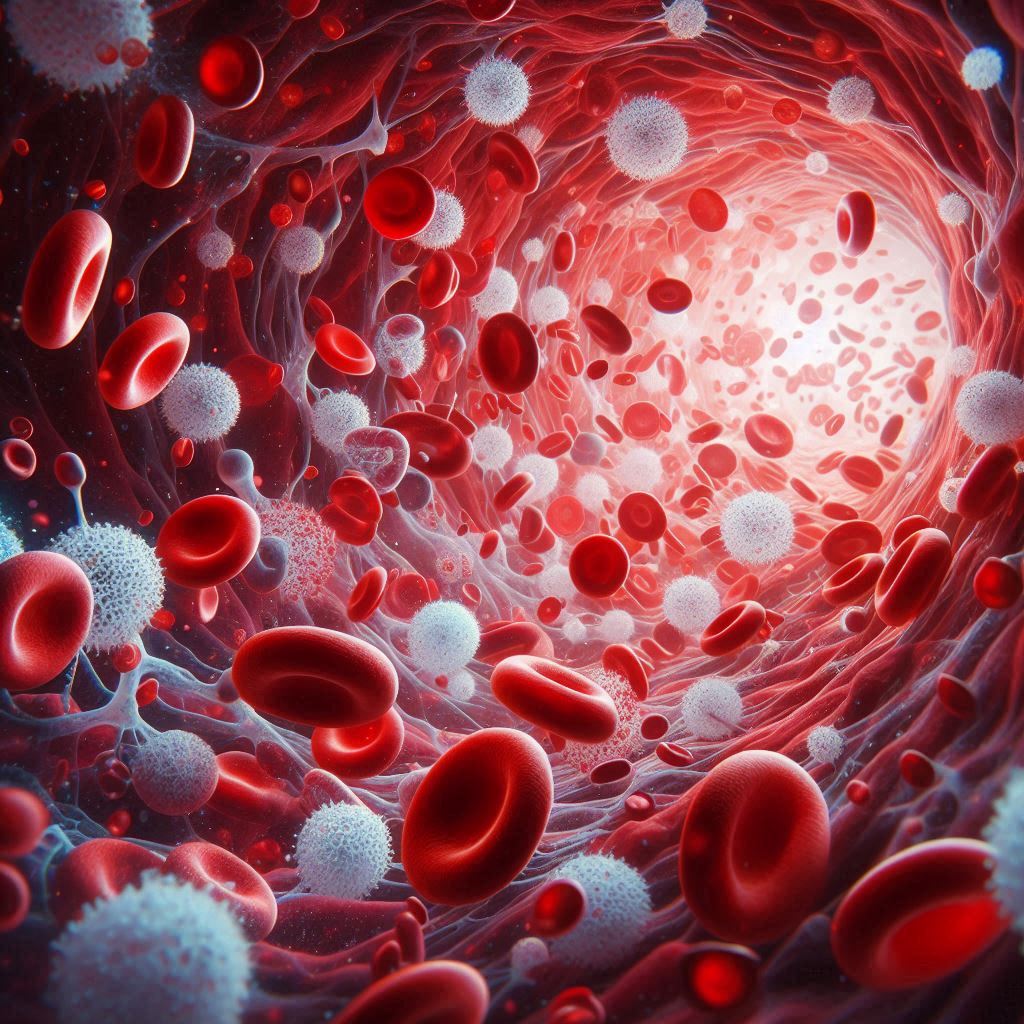
Image of white blood cells
Platelets (Thrombocytes):
- Description: Platelets are small, disc-shaped cell fragments that originate from the cytoplasm of megakaryocytes in the bone marrow.
- Functions: Platelets are essential for blood clotting (coagulation). They gather at the site of a blood vessel injury, adhere to the vessel’s walls, and form a plug to help stop bleeding.
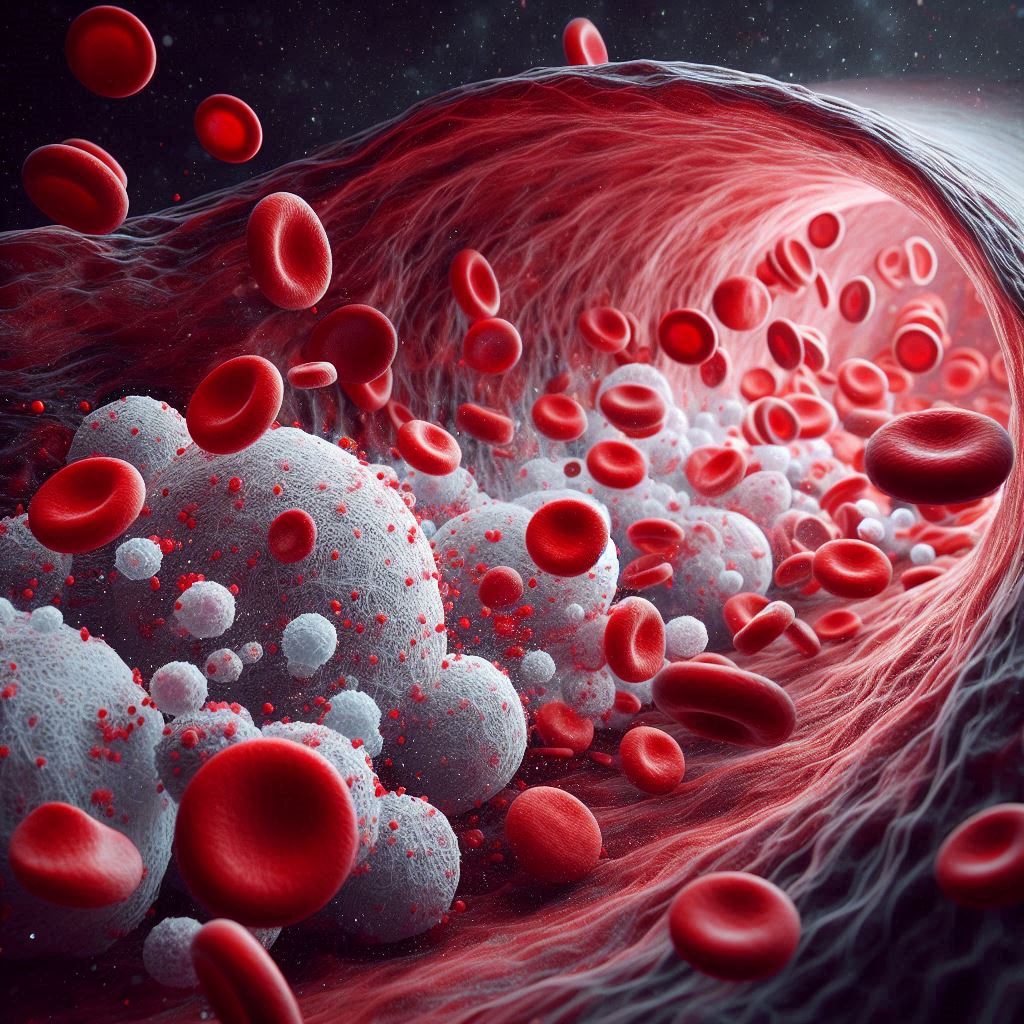
image of platelets in blood
Plasma
- Description: Plasma is the liquid component of blood, making up about 55% of its total volume. It is a yellowish fluid that is primarily composed of water (approximately 90%), but it also contains proteins, electrolytes, nutrients, hormones, and waste products.
- Functions: Plasma serves as a medium for transporting substances such as glucose, lipids, metabolic waste products, carbon dioxide, hormones, and proteins like albumin, fibrinogen, and globulins.

Circulatory Pathways
Systemic Circulation:
- Oxygenated blood is pumped from the left ventricle to the aorta.
- Blood travels through arteries to tissues and organs.
- Deoxygenated blood returns to the right atrium via veins.
Pulmonary Circulation
- Deoxygenated blood is pumped from the right ventricle to the lungs via the pulmonary artery.
- Blood is oxygenated in the lungs.
- Oxygenated blood returns to the left atrium via the pulmonary veins.
Key Concepts to Remember
- The heart functions as a double pump: one side pumps blood to the lungs, and the other pumps it to the rest of the body.
- Arteries carry blood away from the heart, veins carry blood toward the heart, and capillaries are sites of exchange between blood and tissues.
- Blood has multiple components, each with specialized functions vital for homeostasis.
- Systemic circulation supplies oxygenated blood to the body, while pulmonary circulation reoxygenates blood through the lungs.
Summary and Review Questions
Summary: The circulatory system is crucial for maintaining homeostasis by transporting essential substances throughout the body and removing wastes. The heart, blood vessels, and blood each play vital roles in this process. Understanding the structure and function of these components is key to grasping how the circulatory system works.
Review Questions:
- What are the four chambers of the heart and their functions?
- Describe the flow of blood through the heart starting from the right atrium.
- Explain the differences between arteries, veins, and capillaries.
- What are the main functions of red blood cells, white blood cells, platelets, and plasma?
- Differentiate between systemic and pulmonary circulation.
